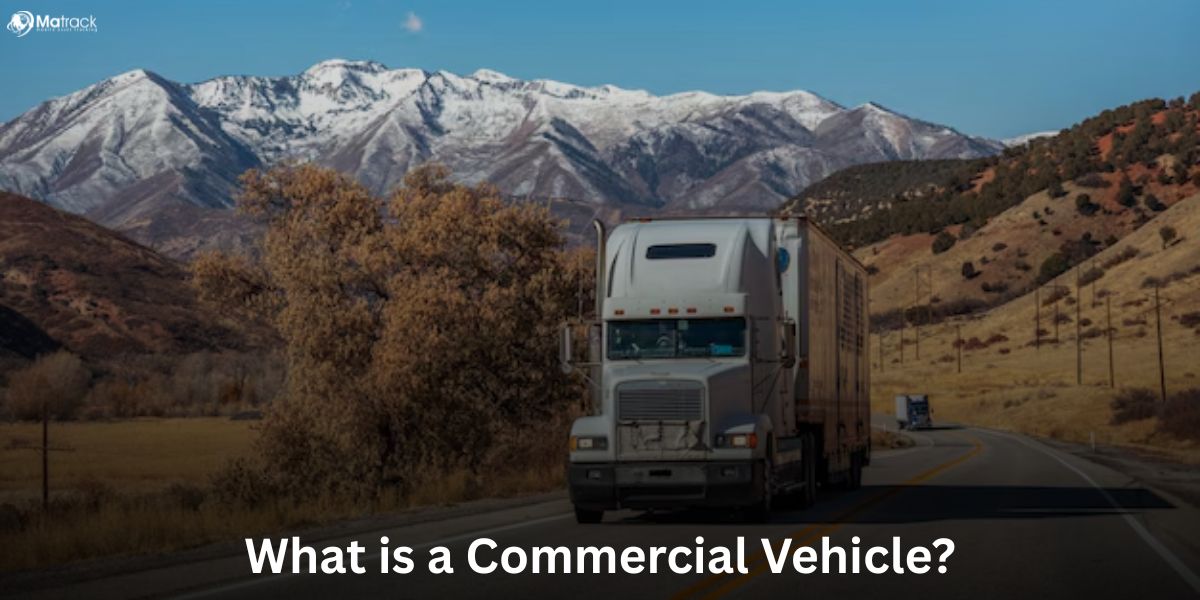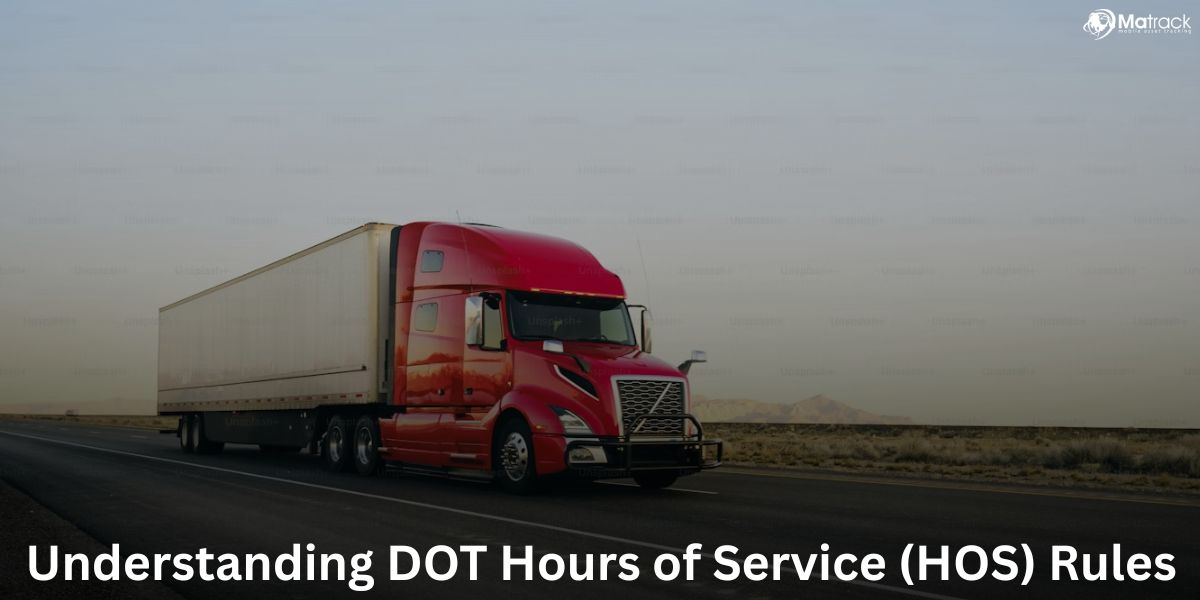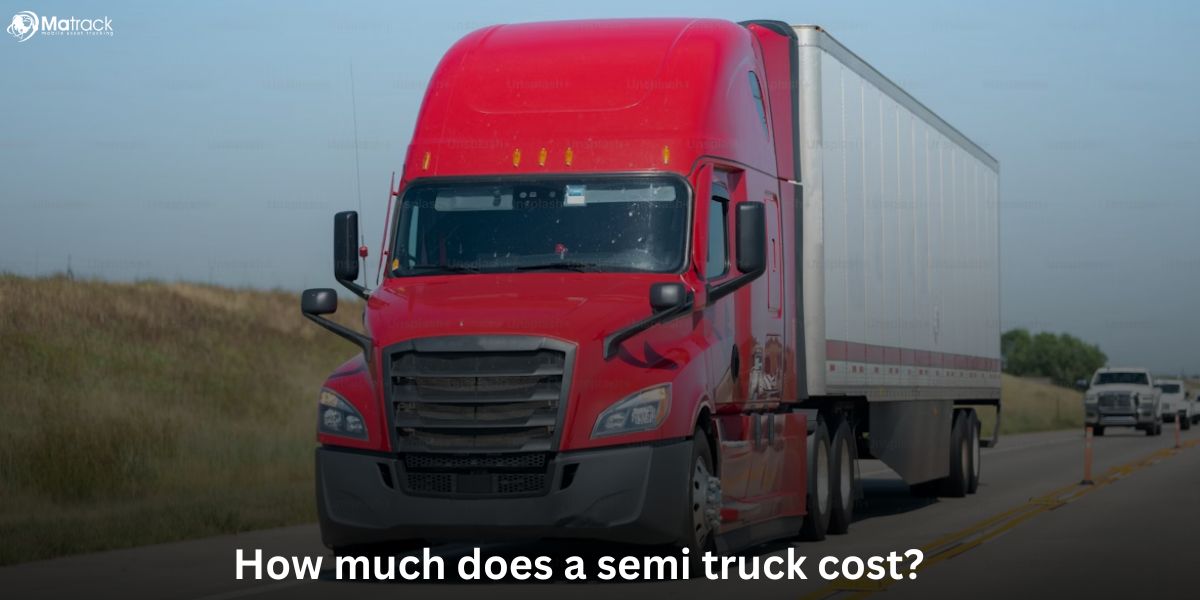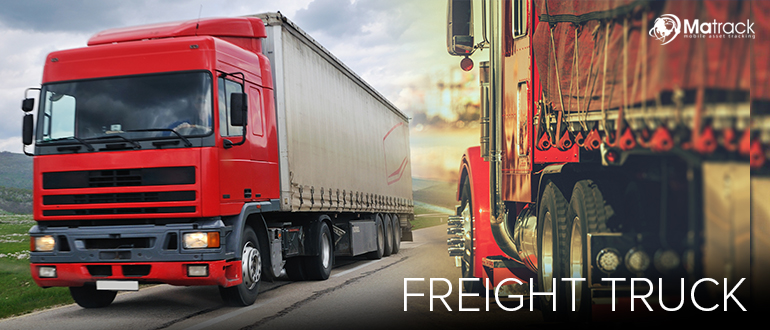Key Takeaways
- A commercial vehicle is any vehicle used for business purposes like transporting goods, passengers, or services.
- The vehicle becomes commercial based on its use, ownership, and weight over 10,000 pounds.
- Commercial vehicles require proper licensing, insurance, and compliance with FMCSA safety rules.
- Matrack helps manage commercial vehicles through GPS tracking, driver monitoring, and regulation compliance.
What Makes a Vehicle Commercial?
A commercial vehicle is defined by its intended use in business activities, not just its type or size. A vehicle becomes commercial when it is operated for transporting goods, passengers, or equipment in exchange for financial compensation.
Three specific factors determine whether a vehicle qualifies as commercial:
- Usage: The vehicle is actively used to support business functions, such as making deliveries, transporting clients, or providing mobile services.
- Ownership: The vehicle is either owned, leased, or registered under a business entity or commercial name.
- Specifications: The vehicle exceeds standard limits set by transportation authorities, particularly having a gross vehicle weight rating (GVWR) over 10,000 pounds in the United States.
A small van delivering bakery products, a rideshare SUV operated by a contractor, or a large semi-truck hauling construction materials all meet the commercial classification, because their operation is tied directly to revenue generation.
The unifying element is business involvement, not the size, model, or appearance of the vehicle.
Why Commercial Vehicles Are Important
Commercial vehicles keep businesses running by transporting goods and services. They help companies deliver faster, safer, and more reliably.
Economic Backbone of Supply Chains
They move raw materials to factories and finished products to stores. This keeps supply chains stable and industries productive.
Foundation of Public Transportation
Buses and vans carry workers, students, and tourists every day. These vehicles make city travel easier and more affordable.
Operational Efficiency for Businesses
Work vans and trucks carry tools, parts, and staff to job sites. This saves time and helps complete more jobs daily.
Access to Remote and Underserved Areas
Commercial vehicles reach places where public transport cannot. They deliver food, supplies, and services to rural and remote areas.
Direct Impact on Employment
Millions of drivers, loaders, and mechanics depend on these vehicles for jobs. They also create jobs in repairs, logistics, and fuel stations.
Platform for Brand Visibility
Businesses use logos and contact info on their vehicles. This turns each trip into a moving advertisement.
Commercial vehicles are key to business, transport, and jobs. They improve daily life by moving people and products quickly and safely.
Types of Commercial Vehicles
Commercial vehicles come in different sizes and styles, depending on the job they perform. Each type supports a specific business function and industry need.
Box Trucks (Straight Trucks)
Box trucks have a cargo space fixed to the cab and are mostly used for deliveries. They work well for moving furniture, appliances, and packages in cities.
Semi-Trailer Trucks (18-Wheelers)
Semi-trailers haul large loads across long distances. They include a front tractor and a rear detachable trailer.
Pickup Trucks
Pickup trucks are used for jobs like construction, repair, and landscaping. They become commercial when equipped with racks, toolboxes, or branding.
Passenger Vans and Buses
These vehicles carry groups of people for schools, hotels, or airport shuttles. Popular models include the Ford Transit and Mercedes Sprinter.
Refrigerated Trucks
Refrigerated trucks keep food and medicine cold during transport. They are vital for grocery chains and pharmaceutical suppliers.
Tankers
Tankers carry liquids such as fuel, milk, or chemicals. Most require drivers to have special safety licenses.
Flatbed Trucks
Flatbeds have an open platform without sides or a roof. They transport large items like pipes, machines, or lumber that won’t fit in closed vehicles.
Weight-Based Classifications
In the U.S., the Department of Transportation (DOT) and Federal Motor Carrier Safety Administration (FMCSA) classify commercial vehicles based on their GVWR:
- Light-Duty: Up to 10,000 lbs (e.g., small delivery vans)
- Medium-Duty: 10,001–26,000 lbs (e.g., utility trucks, large vans)
- Heavy-Duty: Over 26,001 lbs (e.g., semi-trucks, heavy equipment haulers)
These classifications determine licensing requirements, insurance levels, road taxes, and inspection protocols.
Who Drives Commercial Vehicles?
Driving a commercial vehicle often requires a Commercial Driver’s License (CDL). The CDL is broken into three classes:
- Class A: For operating large combination vehicles like tractor-trailers
- Class B: For single vehicles like buses or dump trucks
- Class C: For transporting hazardous materials or 16+ passengers
Each class demands specific testing and certifications. For instance, drivers hauling flammable liquids or oversized cargo must pass endorsements such as Hazmat (H) or Tank Vehicle (N).
CDLs help ensure drivers are trained for the size and complexity of their vehicle, which directly improves road safety and cargo handling standards.
Commercial Insurance Requirements
Commercial vehicles must have insurance because they face higher risks on the road. This includes coverage for accidents, damaged property, and injuries.
Policies also protect against cargo theft, spoilage, and accidents with uninsured drivers. Medical costs for drivers and passengers are often included too.
The insurance amount depends on the vehicle and what it carries. A truck with chemicals might need $5 million coverage, while a small van needs much less.
FMCSA Regulations for Commercial Vehicles
The Federal Motor Carrier Safety Administration (FMCSA) sets safety and operation rules for commercial vehicles in the U.S. These regulations apply to both drivers and fleet owners.
Key FMCSA rules include:
- Hours of Service (HOS): Limits daily and weekly driving hours to reduce fatigue
- Electronic Logging Devices (ELD): Requires digital tracking of driving time and rest periods
- Vehicle Maintenance: Mandates regular inspections and repairs to keep vehicles roadworthy
- Driver Qualification Files: Requires detailed records of driver licenses, medical exams, and history
- Drug and Alcohol Testing: Enforces regular testing to ensure driver fitness
- Weight and Size Limits: Controls how much a vehicle can legally carry per trip
- Hazardous Materials Compliance: Requires special permits and training for transporting dangerous goods
How Matrack Helps Commercial Vehicles
Matrack provides advanced GPS tracking and fleet management solutions that improve safety, efficiency, and compliance for commercial vehicles. It helps businesses lower costs, boost productivity, and stay within legal transport rules.
- Real-Time GPS Tracking: Keeps constant location updates on all vehicles, helping manage routes and reduce delays
- Fleet Optimization Tools: Monitors fuel use, idle time, and engine performance to cut expenses
- Compliance Support: Ensures drivers follow FMCSA rules with features like Electronic Logging Devices (ELDs)
- Driver Behavior Monitoring: Tracks speeding, harsh braking, and other risky habits to improve safety
- Maintenance Alerts: Sends reminders for service and repairs to prevent breakdowns
- Theft Protection: Alerts businesses if a vehicle is moved without authorization or exits set boundaries



